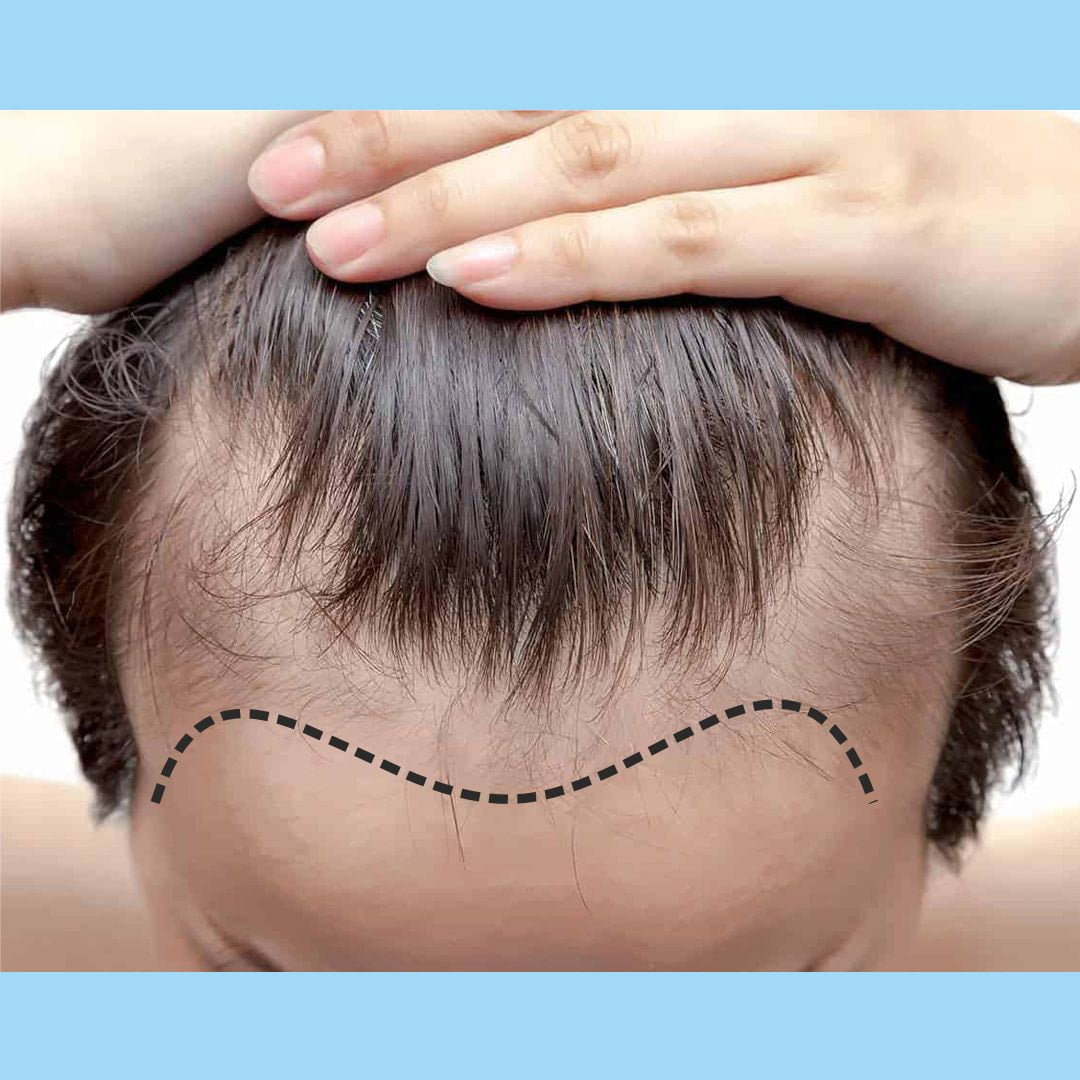Designing the hairline well plays a very pivotal role in achieving a successful Hair Transplant. When you plan to have a hair transplant surgery, discussing and designing your hairline before the procedure is extremely crucial.
The chief aim of the procedure is adding volume to your hair and promising you a head full of hair; nonetheless, a bad hairline will leave you with a very unsatisfactory outcome. An unplanned, haphazard hairline will make the result seem very unnatural. Furthermore, you might need another procedure to remedy an error. Hence, planning the hairline well ought to be top priority.
A correctly done hair transplant should make one have a natural looking head of hair which improves one’s aesthetic appearance as well as his self esteem. The very first step in a hair transplant procedure is the designing of the hairline. The hairline is the most noticeable part of a hair transplant, given that, it is exposed right in the front; and thus, settling on the most appropriate design will help establish a suitable frame for the face and it works as a basis for the surgery too.


Understanding the Aesthetics of a Hairline -
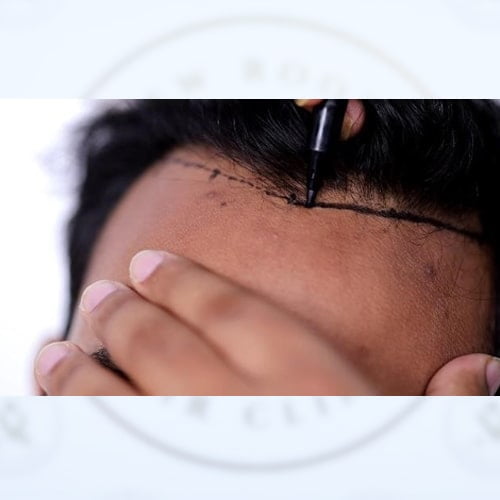
A well done hairline is a creative venture that is a seamless amalgamation of judgment, skill, experience and art.
The doctor has to assess how the hairline fits in well with one’s facial features, the phase of hair loss, and the shape of the existing temple hairline.
Factors which decide the design of your hairline -
Each patient’s hairline is distinct and one of a kind and no two people’s is the same. A surgeon will take in to account the patient’s facial aesthetics, cultural background, and race to establish what hairline will look most appropriate and natural.
Make sure that you plan a hairline that is mature and will work for you for the rest of your life. With age, the hairline is bound to recede and a hairline which is designed too low will look like a strip of hair that’s cut off from the hair behind it. This will greatly mar the aesthetics and make the hair look highly unnatural.
An age appropriate hairline is pivotal for a natural look. You need to take in to account the ‘macro hairline’ and the ‘micro hairline’.
The macro hairline describes the position and shape of the hairline; while the micro hairline is the creation of the recipient spot that will lodge the hair grafts.
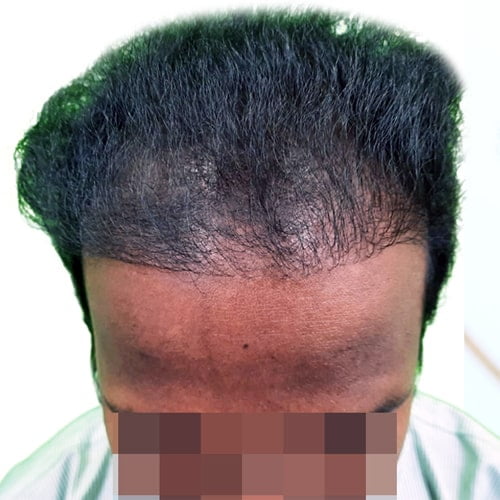
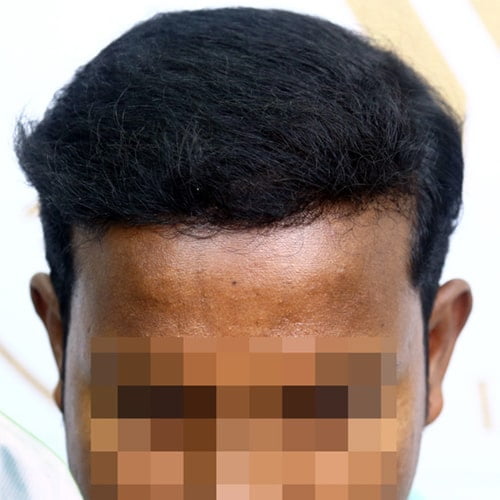
Steps of Hairline design -
A successful hairline design involves many steps, here’s a round-up:
Establishing the midline so as to have a uniform symmetrical hairline by determining MFP, MPP and FTA.
Balancing the proportions of the face based upon the rule of thirds.
Adjusting the front and the corners accordingly.
Adding micro-irregularities as a natural hairline to boost aesthetics.
Defining the priorities and budgeting the hair density in different areas strategically according to the class of hair loss.
Hairline position -
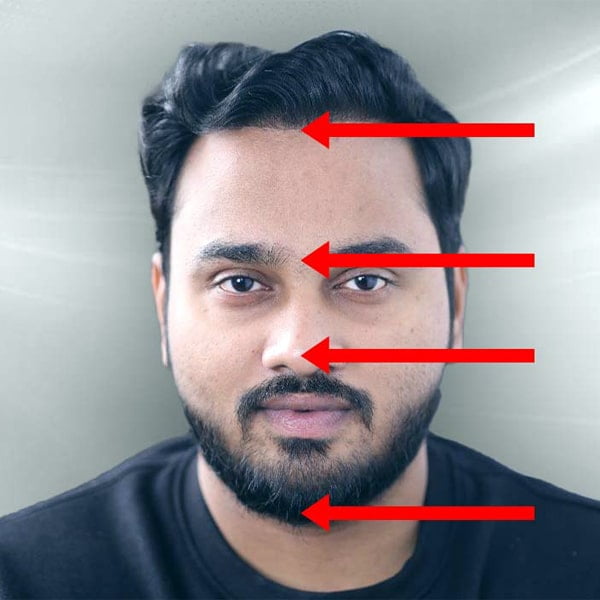
The Rule of Thirds:
By and large, most good-looking faces have a distinct proportion. The face is divided in to 3 sections - from hairline to the middle of the eyebrows, middle of eyebrows to the tip of nose and the tip of the nose to the bottom of chin.
Designing the hairline keeping in mind these proportions helps maintain the face aesthetics.
At times, in case the donor hair is somewhat limited or the quality of the grafts is very thin, then we may have to elevate the hair line in the front and even at the corners.
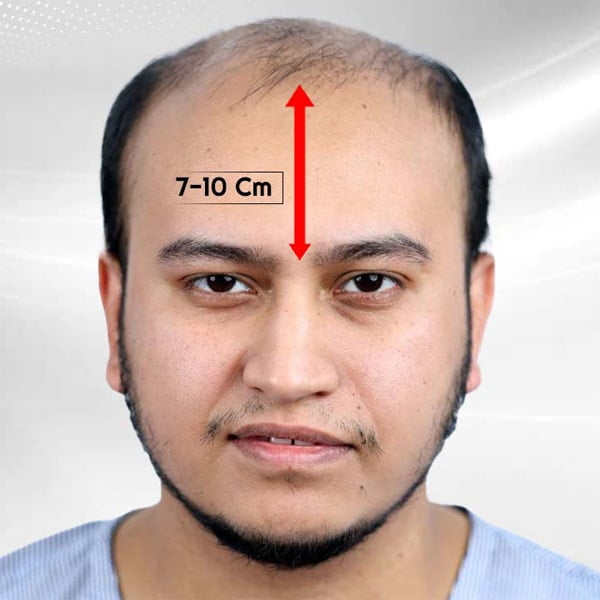
The 7-10cms rule:
Conventionally, the distance from middle of eyebrows to the tip of hairline is 7 to 10 cms.

4 Fingers Breath Rule:
The MFP is situated 4 finger breaths above the glabella. However, this is somewhat variable, because of a difference in the finger size.
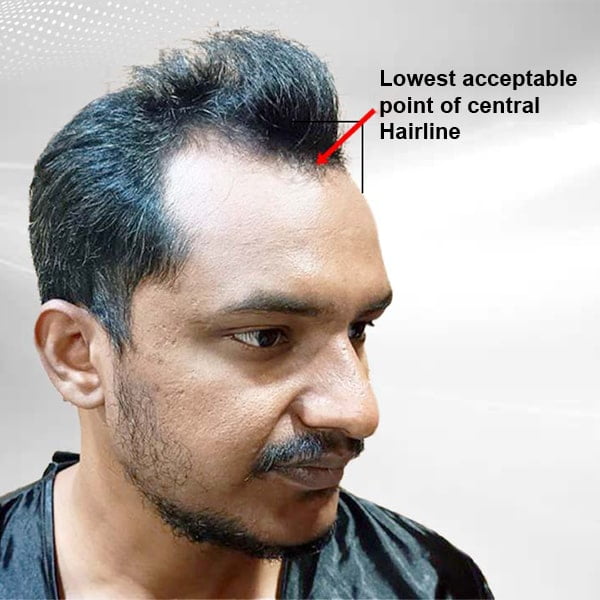
The Curve of Forehead Rule:
Your forehead makes a gentle horizontal curve as it meets the vertical curve. The convergence of these 2 planes determines the MFP.
Any one of the above mentioned rules can be used depending upon the patient's age, severity of the hair loss, and the donor supply. The hairline should be appropriate and aesthetic and shouldn’t be placed too high or too low.
Hairline Shape -
After you have located the MFP and FTA, the frontal hairline is designed by drawing a gentle slope that connects the MFP to FTA. MPP assists where the frontal hairline starts to curve posteriorly towards the FTA. The more conservative hairline needs to move from rounder shape to oval or bell shaped.
The shape of the hairline ought to match the shape of the head and the facial features. Your surgeon will choose between the Round Design and the Bell Curve Design while creating your hairline. The Round Design is perfect for a wide head that needs a hairline that goes well with the wide arc of the frontal aspect of the scalp.
The Round Design works well for mature, stable temporal hair. Conversely, the Bell Curve Design suits a narrow head that has temporal recession.
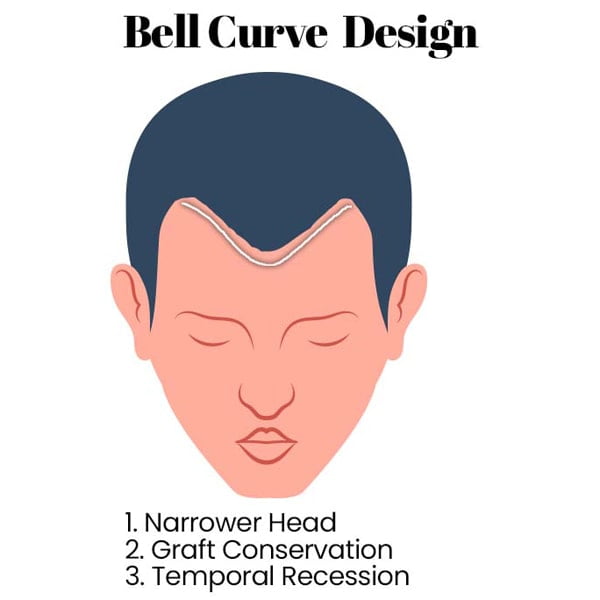
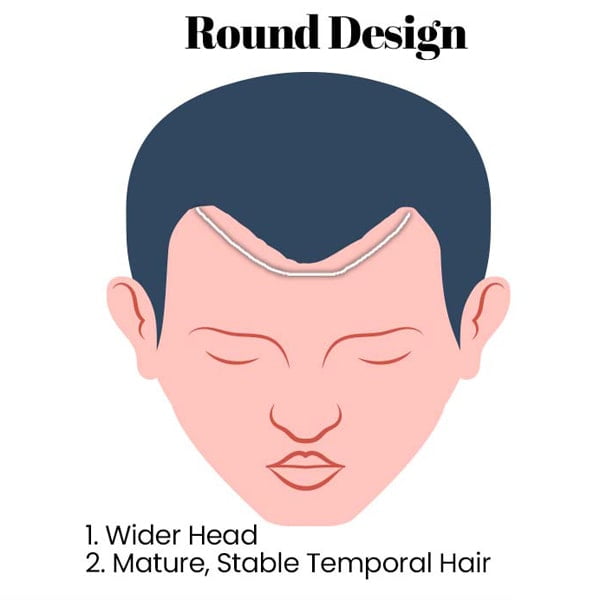
Temple Design -
Whilst designing the hairline, the position as well as the shape of the hair at the temples Must be kept in mind. The temporal angle represents ‘unfolding’of the hairline and the temple must represent an anglein which the temple and the hairline match in shape as well as in angle. The outer boundary of the hairline runs along an imaginary point that’s drawn through the outer corner of the eyes. Any hair that falls outside this line should be considered temple hair and should be recreated as such. Thus, badly designed hairlines that breach this rule, i.e. extend beyond the outer limit of this line, always looks unnatural and are extremely hard to rectify when badly executed.
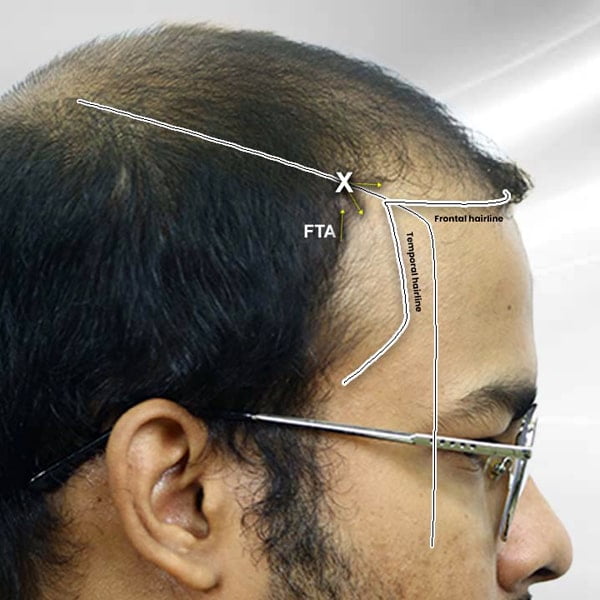
This region is highly visible and hence needs great skill when designing and executing. Line 1 is drawn from tip of nose over the centre of pupil to FTA. Line 2 is drawn from tip of earlobe to proposed MFP.
Artistic skill and judgment are needed to finalize the design. The bottom border of TP is usually parallel to the lateral aspect of the eyebrow and the top border should slope gently backwards towards the temporal hairline. Habitually, miniaturized hair from pre-existing TP act like a road map for location of the transplanted hair. The angle of the hair in TP should be close to 0 degree. It should point downwards and posterior towards the ear.
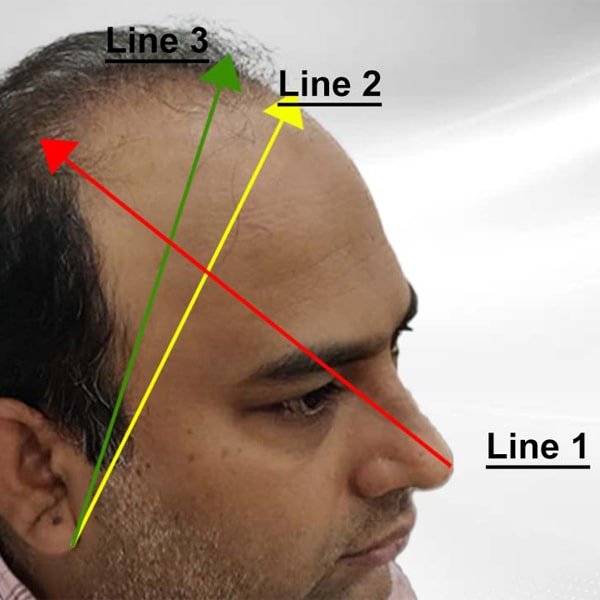
Natural Characteristics of Hairline -
A natural hairline covers most of its anterior frontal border. It comprises of a number of borders and zones that work together to frame the face and create the final aesthetic look. The elements are described as follows.
Frontal Hairline:
The frontal hairline fringes the front of your face and traverses horizontally from one temple to the other.
Mid-frontal point (MFP):
The MFP is the most frontward point of the hairline in the centre.
Mid-pupillary point (MPP):
The MPP is a point that’s lateral to the MFP where the hairline begins and goes posteriorly on a line drawn vertically from the pupil.
Transition zone (TZ):
TZ is the most frontal zone of the frontal hairline. It should be seen as soft and irregular, comprising of micro as well as macro irregularities.
Defined zone (DZ):
Situated behind the TZ and the site where the frontal hair line starts to get thicker and denser.
Frontal tuft (FT):
The FT is an elliptical area that overlies the middle segment of the DZ. This is an aesthetically critical area for the appearance of fullness and density.
Frontal temporal angle (FTA):
The point where the frontal hairline meets the temporal hairline is the FTA. It lies on a line that’s drawn vertically from the lateral epicanthi of the eyes.
Temporal hairline:
The temporal line fringes the sides of the face, traversing from the FTA to the sideburns.
The lateral hump (LH) or lateral fringe:
The patch of hair that’s situated on the side of the head in the temporo-parietal area which links the permanent donor hair below to the mid scalp above. Its anterior border is the temporal hairline.
Temporal point (TP):
A triangular shaped projection that’s situated on the lower part of the temporal hairline.
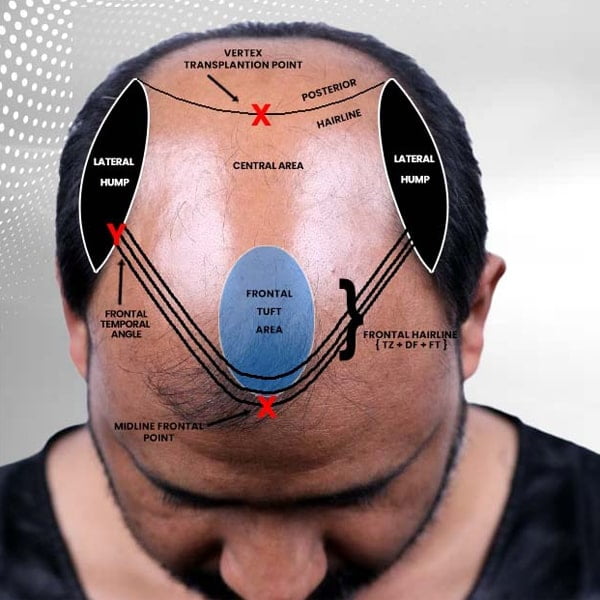
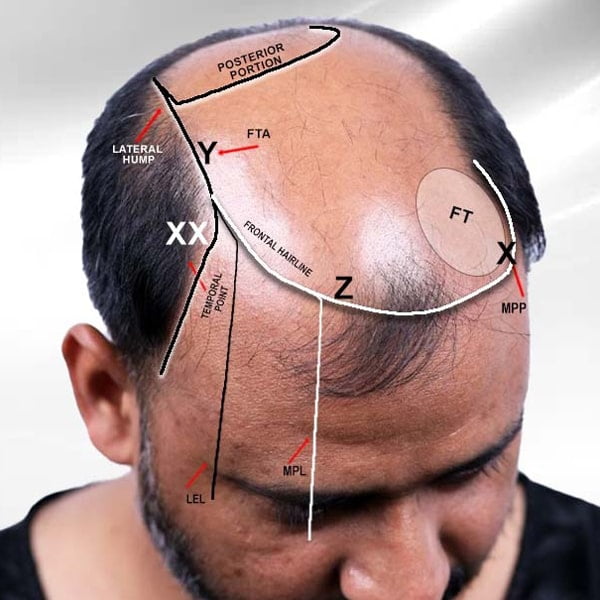
Zones -
There are 3 zones: the anterior area or TZ; the posterior area or DZ; and an ovoid area in the centre of the DZ called the FT. All 3 zones contribute in their own distinctive way to the overall appearance of the hairline.
1. Transition Zone
The TZ comprises of the first 0.5 to 1.0 cm of the hairline. It must look irregular and ill-defined, and very gradually it should take on more definition as it reaches the DZ. Observing normal TZs shows that several specific elements come in to play and work together to create the overall effect of the hairline. These elements are described as follows -
2. Single Hair Grafts
One-hair grafts should be employed in the anterior aspect of the TZ with a transition towards 2-hair grafts in the posterior aspect. This promises you a natural, softer, aesthetic look.
3. Sentinel Hairs
Very fine, isolated single hairs called sentinel hairs are found dispersed haphazardly in front of the TZ. The sentinel hair are responsible for softness, natural look and irregularity.
Micro-irregularity :
Closely examining the TZ shows tiny, scattered and patchy clusters of hair along its border. These clusters differ in shape and depth and bear a resemblance to ill-defined triangles of varying sizes. These clusters create intermittent density along the TZ. This form of irregularities is known as micro irregularity, given that, it is more obvious when viewed close-up rather than from far. This helps avoid a straight or stitch – like hairline.
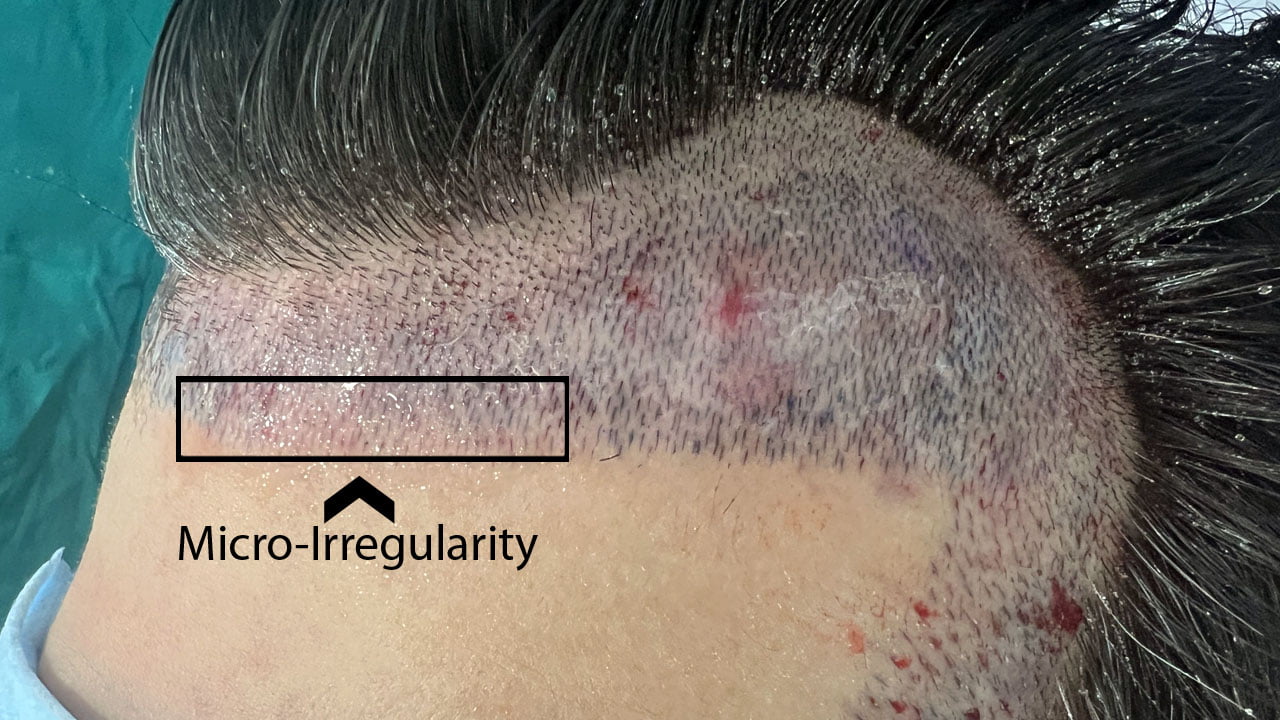
Macro-irregularity :
If you stand back and observe a normal hairline from afar, the anterior border appears to be more curvy than linear. This type of irregularity is called the macro irregularity, since it is more evident when one stands far and observes the hairline from a distance. The micro-irregularity as well as the macro-irregularity are necessary ingredients in the TZ to design a natural-looking aesthetic hairline.
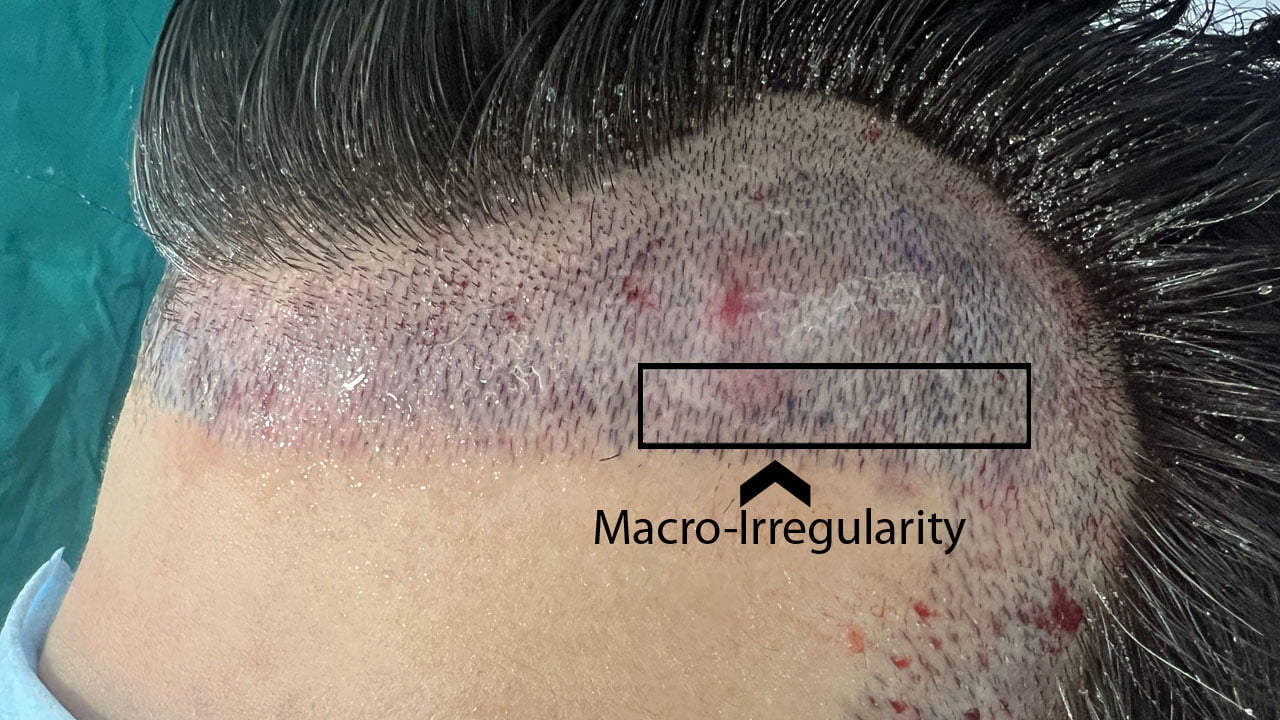
Defined Zone
The DZ is present immediately posterior to the TZ. Here, the hairline has a greater degree of definition and density. Increasing the density in the DZ creates a fuller looking hairline by reducing the space that’s seen through the TZ. Increasing the density in the DZ is the most effective way to make the hairline look fuller and thicker and aesthetically pleasing.
FT Area
The FT is a fairly small, but aesthetically important oval area which overlies the mid portion of the DZ. The thickness in this site should be greater than the rest of the DZ. From the front, you will appear to have a full head of hair, thanks to this tuft.
FTA Area
In some ethnic groups (Black, Middle Eastern, Asian, and Hispanic), its commoner to see broader, flatter hairlines with very little hair recession. In such cases, if the donor/recipient ratio is good, an aggressively filled-in FTA is quite acceptable. On the other hand, even if a flatter hairline is commoner amongst certain ethnic groups, but the donor/recipient ratio is poor, then you need to create temporal recession. Female hairlines are an exception. In females, the FTA is more medial, rounded, and filled-in.
Proper Angle and Direction
Angle and direction are distinct entities. Angle is the degree of elevation that your hair has when it leaves the scalp. Direction is the way the hair points when it leaves the scalp. The surgeon needs to pay close attention to changes in the angle as well as the direction when he transplants different parts of the hairline. Frequently, there are a few remaining miniaturized hair that act as a blueprint for the surgeon to follow.
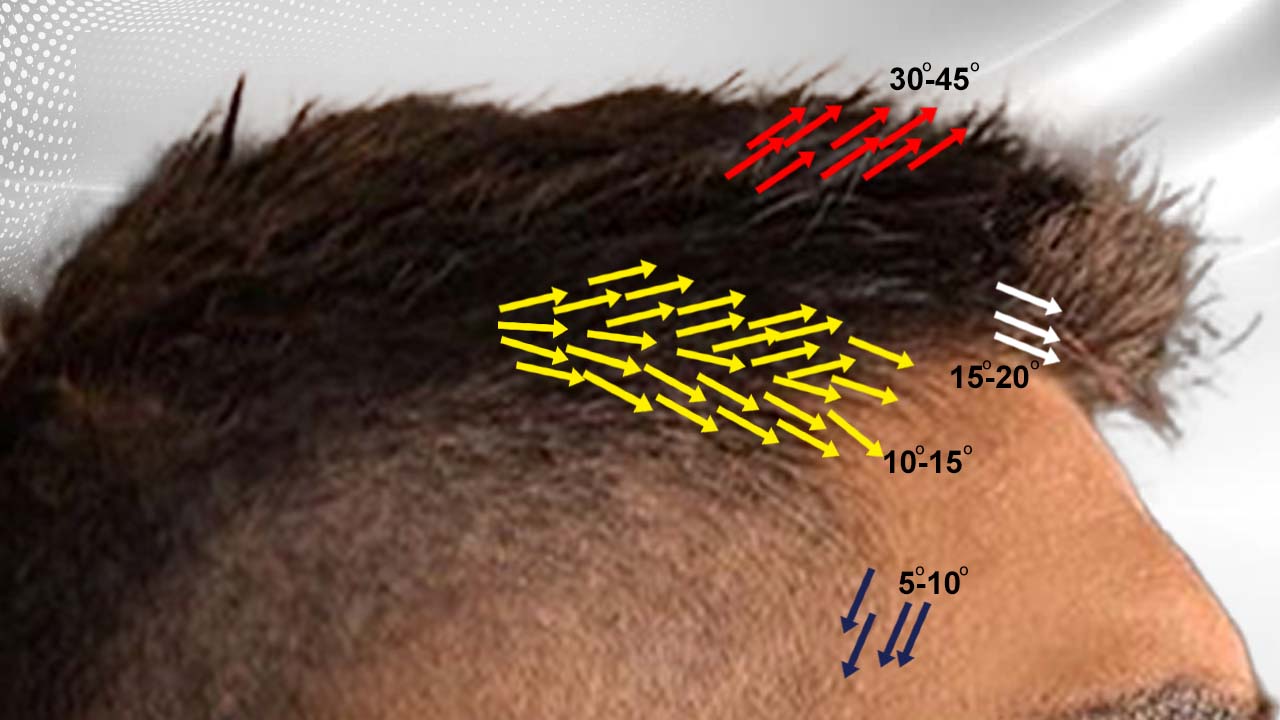
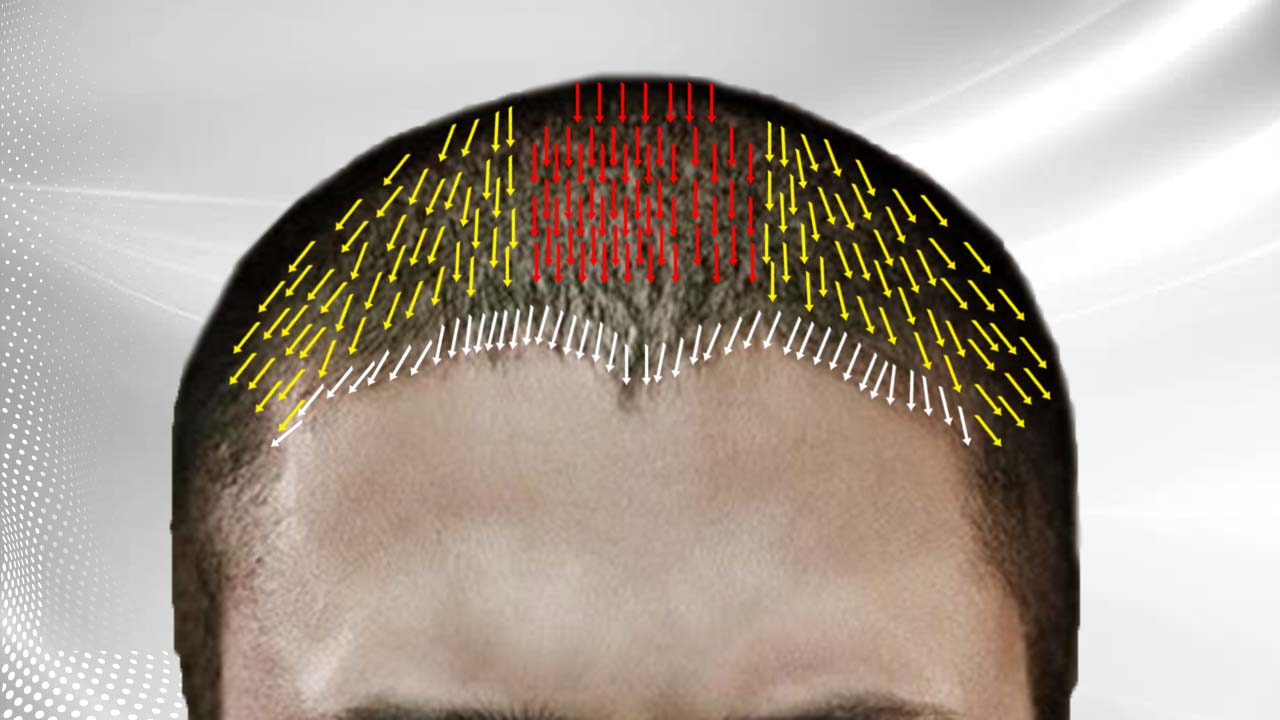
In the mid scalp, the hair tends to exit at 30° to 45° and they point forwards towards the nose.
When you get to the frontal hairline, the angle changes to 15° to 20°, while the direction remains pointing forwards. Occasionally, the hair in this area may curve towards the right or left.
As you move laterally along the hairline, the direction stays forwards until you near the FTA.
As you get to and sweep around the FTA, towards the temporal hairline, there occurs a very gradual change in direction from forwards to inferior lateral. Alongside, a gradual change occurs in the angle from 15 in the frontal hairline to almost flat (5–10) in the temporal hairline.
As you go down the temporal hairline towards the TP, the direction changes to more posteriorly and the angle is as flat as possible. Coronal incisions are employed in the temporal hairline to attain a more acute angle.
Graft direction & Angle
In transition zone the graft angle is always acute. The receipt site created with slits should be always acute. Where as direction in transition zone should be as per as per patient’s existing hair direction.
There are many ways among which are listed below :
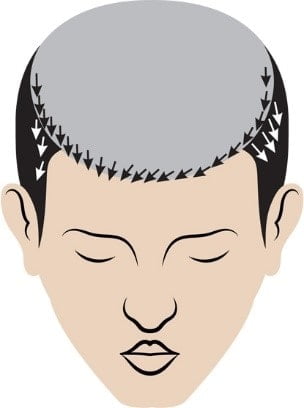
Predominant left to right direction
Predominant left to right direction from MFP. This is most common direction
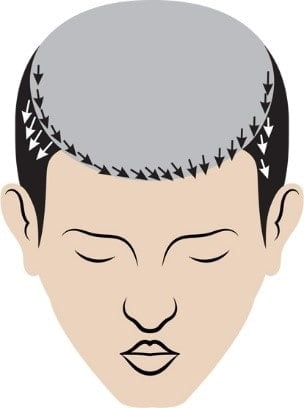
Predominant Right to Left Direction
Predominant right to left direction from MFP. If any one desires because of his hairstyle direction.
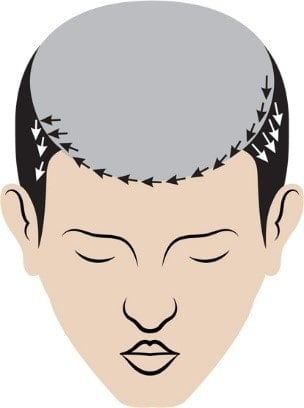
Complete Left to Right
Complete left to right if sometimes hairline is present with residual hair in same direction
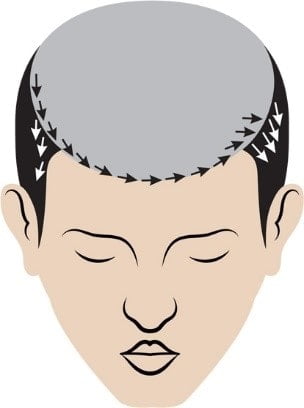
Complete right to left
Complete right to left if sometimes hairline is present with residual hair in same direction
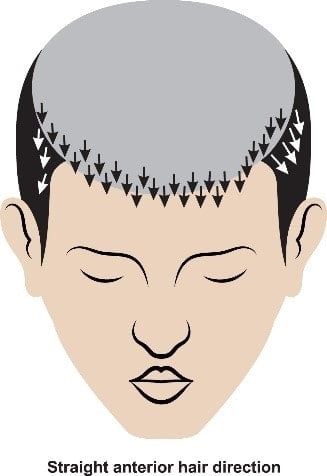
Straight anterior hair direction
Straight anterior if and only if hair are directed naturally in that way
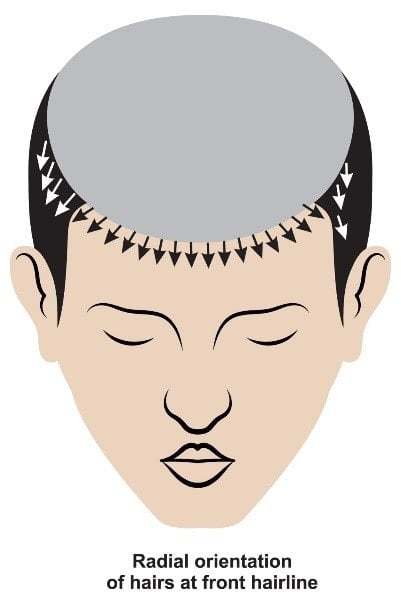
Redial Orientation of Hairs at front Hairline
Radial orientation at frontal side if someone demands spice look where hair turns behind posteriorly
Selective Distribution of Grafts
Selective distribution is a very effective tool which helps imitate the density gradient found in normal hairlines.
It is a safe and powerful tool and is better than increasing the incisional density. By and large, the following selective
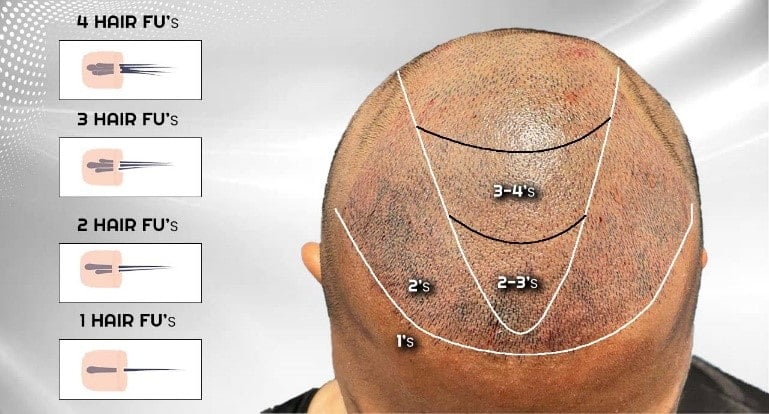
Distribution of Grafts is used :
The TZ comprises of 1-hair grafts with a shift to 2-hair grafts towards the posterior region in the zone. 1-hair grafts vary in thickness. The finer 1-hair grafts are usually used as sentinel hairs and in the most anterior aspect of this zone. The DZ chiefly contains 2-hair grafts.
The FT area consists of a larger concentration of 3-hair grafts. Follicular pairing is an advantageous tool to use in the FT area when there are not adequate 3-hair grafts found naturally. With follicular pairing, 1-hair graft and a 2-hair graft are united to make an artificial 3-hair graft.
Placement of Grafts -
A The most frequently asked questions by to-be hair transplant patients are ‘How many grafts are needed?’ ‘What is the density I will see?” We, at the New Roots Hair Clinic have seen incisional densities ranging from 25 – 35 FU/cm2 that are most commonly used. Higher densities are possible, however, they are more controversial with respect to their survival; and quintessentially, they are not required for good results. The frontal hairline measures about 20 to 30 cm2 when you include all 3 zones (TZ 1 DZ 1 FT). When calculated, a range of 500 to 1050 FU grafts may be required. Of these, about 200 to 400 are 1-hair grafts placed in the TZ and the rest are 2-hair to 3-hair grafts that are inserted in the DZ and FT area.
Never use very high incisional densities in the FT area, where there’s a fragile blood supply; and this in conjunct with dense packing could lead to necrosis or poor growth.
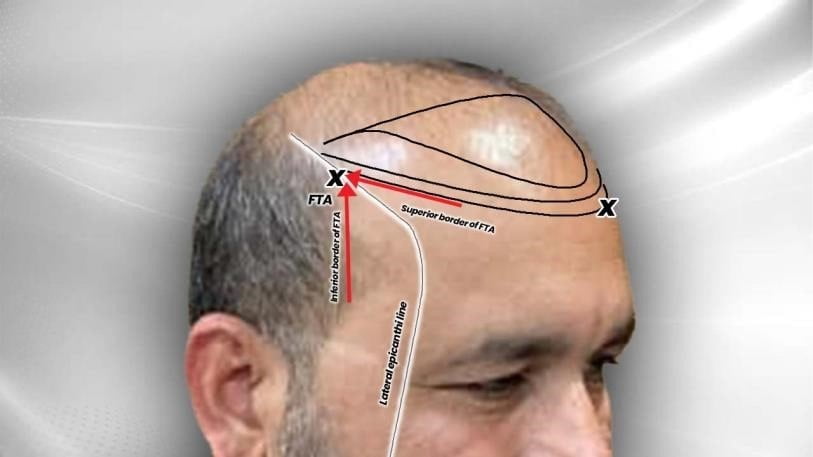
Setting up borders of hairline -
The borders of the hairline comprise of 2 lines: one is the frontal hairline and the other is the temporal hairline and they converge at the FTA. Both recede simultaneously as they progress towards the higher grades of baldness. The FTA stays on a line that’s drawn perpendicular from the lateral epicanthi of the eyes even as the hair loss progresses. The converging point between the temporal hairline and the temporal hairline and the FTA is determined on the basis of the patient’s age, current balding status, potential future hair loss and the donor supply. In case, future hair loss is not considered, there is a huge chance of there being a gap between the loss of existing hair and the transplanted hair.
The hairline needs be a little conservative in case the patient’s hair loss is severe, he has poor donor supply and he is young.

Locating FTA -
The FTA is formed at the convergence of the frontal and the temporal hairlines. The frontal hairline forms the superior arm, whilst the temporal line forms the inferior arm. Locating and crafting the FTA is an exceedingly important and critical task in hairline designing. These are the factors that determine and establish the situation of the FTA:
The lateral epicanthus line rule: A line is drawn vertically from the lateral epicanthus of the eye. The FTA is situated at the site where the lateral epicanthi lines meet the temporal hairline.
Up sloping line rule: The line drawn from the MFP to the FTA should slope upwards when viewed from the side.
Existing temporal hair: In type 3 and 4, the existing temporal hair becomes the inferior border of the FTA.
Visualizing and creating LH: The lateral hump (LH) gives a target to intersect and establish the FTA. The down sloping frontal border of LH runs forwards before it slopes downwards and intersects. The LEL decides the site of the reconstructed temporal hairline.
Parallel lines to side burns: The parallel line drawn to the sideburns and intersecting the LEL decides the FTA in various grades. If the patient has grade 6 or 7, we use a line that’s situated posterior to the side burns. In case the patient has moderate hair loss, we use the line that’s parallel to the middle of the side burn. When there’s minimal hair loss, we use a line that’s located just in front of side burns.
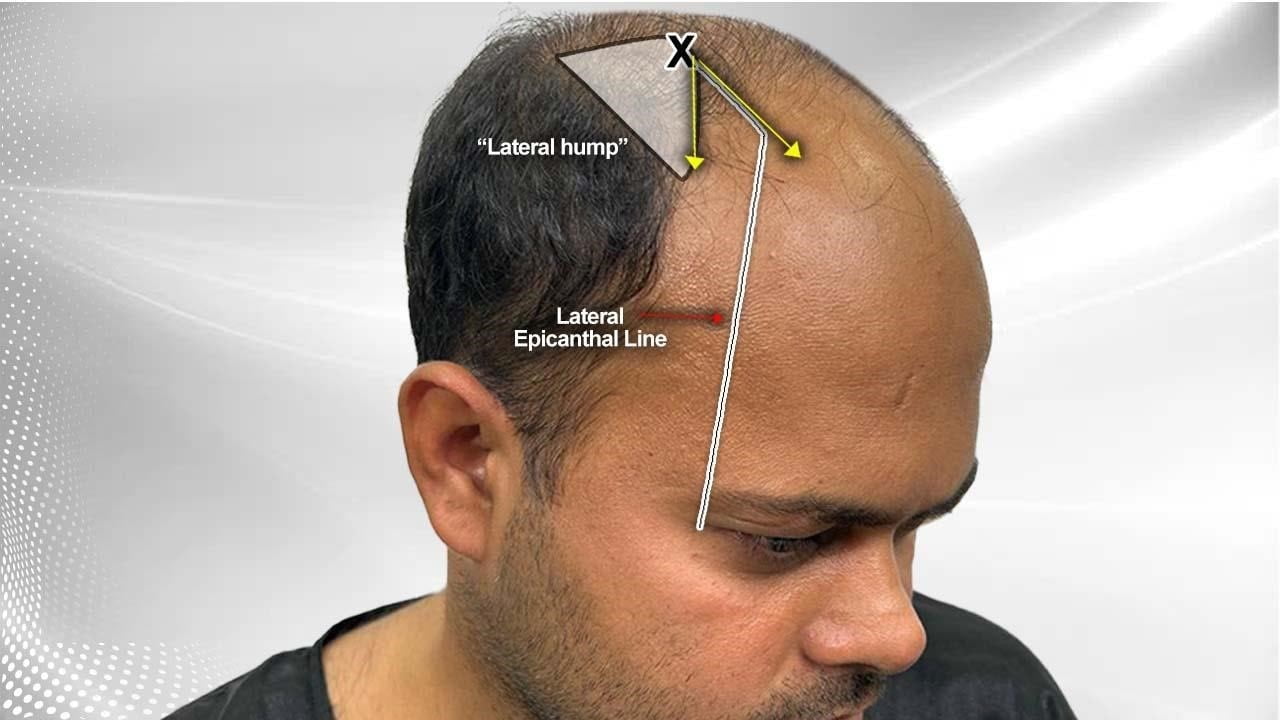
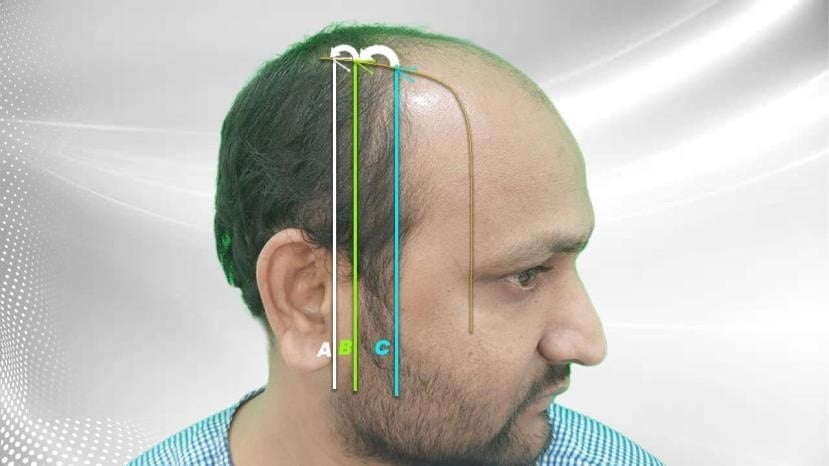
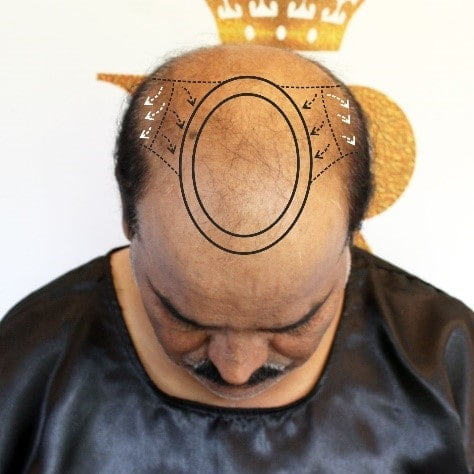
Planning of hair line in Grade 6 / 7 Baldness -
In grade 7 baldness already patient has lost lateral humps. To draw a hairline with above parameters will not give definite result as it will create a gap in donor area and recipient area. To avoid this mistake draw Oval pattern for a frontal-midscalp forelock pattern on a Norwood stage VI/VII patient.
Female Hair Transplant -
In many of the female patients, their existing hairline which is receded is most of the time is visible. It’s better to use previous headline as a marker for shape and position.
Those women who miss the existing hairline can go through the following checkpoints for a good female hairline.
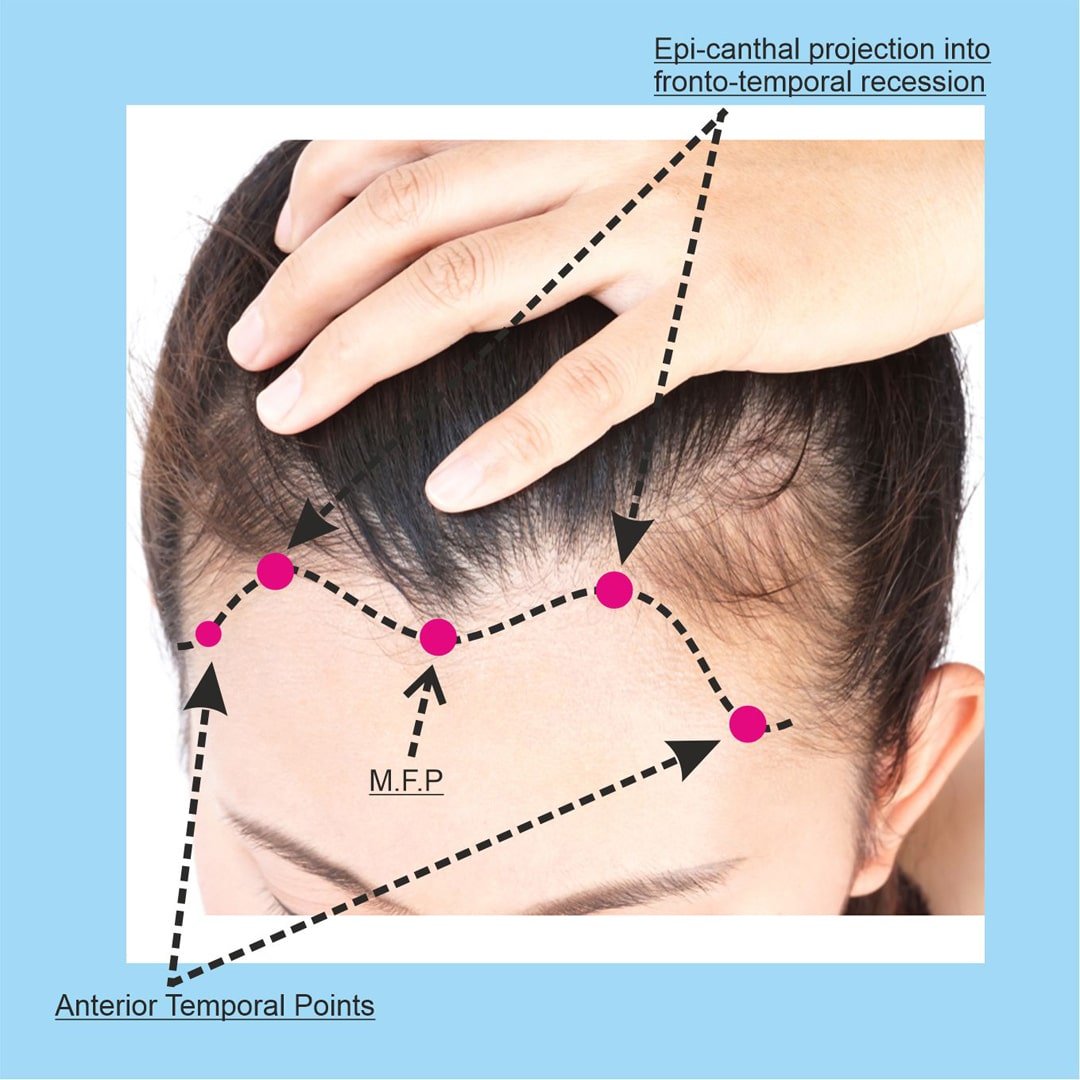
Female hairline composes of three major components that is -Widow’s peak , lateral humps & natural curving towards lateral side.
During locating the MFP it is somewhere around 5 to 6 cm from glabella. From MFP line goes towards epi-canthal projection. From epi-canthal projection line is drawn downwards towards frontal temporal recession. Here, the lines drawn are aesthetically smooth curve.
